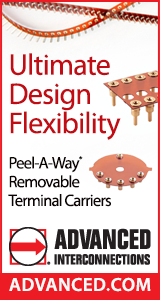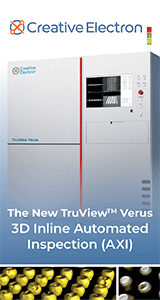|

|
Automated Optical Inspection Performance with Different Solder Alloys
Analysis Lab |
|
Authored By:Timothy O’Neill, Gayle Towell, Carlos Tafoya, Andres Lozoya AIM Solder RI, USA Nick Fieldhouse Omron Automations IL, USA SummaryThis paper presents a comparative study on the performance of Automated Optical Inspection (AOI) systems when applied to printed circuit boards (PCBs) soldered with SAC305 and a third-generation, low-silver, bismuth-containing alloy. We aimed to explore the anecdotal evidence suggesting that the Sn/Ag/Cu/Bi alloy results in fewer false calls compared to SAC305 due to its more uniform matte finish. Although initial findings did not indicate significant differences in false calls, the study revealed that Sn/Ag/Cu/Bi produced more uniform fillets, wetting, and distribution, as well as smoother surfaces, which are critical factors in AOI image processing and analysis. This uniformity enhances the AOI system's ability to train on images, potentially reducing the complexity of inspection settings. ConclusionsThe findings from the AOI inspection provide important insights into the influence of solder alloy selection on AOI performance. While the initial hypothesis that Sn/Ag/Cu/Bi would produce fewer false calls was not directly supported by the AOI data, the study did reveal significant advantages in the uniformity of AOI images produced by Sn/Ag/Cu/Bi. The smoother, more consistent slopes observed in Sn/Ag/Cu/Bi solder joints appear to enhance the AOI system's ability to quickly and accurately assess solder fillets, potentially reducing the time required for system setup and calibration. One unexpected result was the minimal impact of shininess on the detection of defects in SAC305 solder joints. The multi-angle, multi-color lighting method employed by Omron’s AOI system effectively compensated for the reflective variability, allowing the system to accurately determine the slope of even the shiniest areas. This finding suggests that the AOI system's advanced imaging techniques are capable of mitigating issues that might otherwise arise from non-uniform reflectivity, although the overall surface variability of SAC305 still posed challenges. The results indicate that Sn/Ag/Cu/Bi's uniformity and smoothness could offer practical advantages in manufacturing environments where AOI is heavily relied upon. By providing a more consistent surface for inspection, Sn/Ag/Cu/Bi may reduce the complexity of AOI system configuration, leading to faster inspection times and potentially higher throughput. Initially Published in the SMTA Proceedings |
|
Comments
|
|
|
|

|


